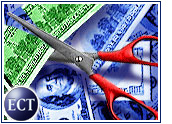Despite exponential increases in Internet investment and access, Latin America’s e-commerce consumer market figures to remain largely untapped for years to come, according to analysts specializing in the region.
For example, the number of Latin Americans with Internet access is expected to quadruple over four years — but only to six percent of the total population. That figure will look stark next to the 70 percent of U.S. citizens that are expected to have online access by 2003, according to International Data Corp. Internet analyst Marc Alexander.
“Clearly, just getting the masses of users onto the Net is a huge hurdle,” Alexander told the E-Commerce Times.
Credit Where Credit Is Due
The prohibitive cost of Internet access and security fears have often been cited for depressing the Latin American online population. However, one reason that has been downplayed, according to Jan Smith, managing director and co-founder of market research firm InfoAmericas, is the remedial status of payment technologies in the region.
“For consumer purchases to take off,” Smith told the E-Commerce Times, “even if the concerns of fear were overridden and consumers got confidence and overnight said, ‘We’re gonna start buying,’ and you had this massive surge in consumer purchasing, the infrastructure of consumer sites is not ready.”
While a majority of Americans and Europeans hold credit cards, Argentina’s credit card penetration level of 30 percent is the highest in Latin America, according to Smith. Companies that are able to find customers with the ability to charge purchases online are held back by a dearth of both secure links and automated payment system software.
“Most companies still have an individual at the other end of the Web page monitoring the Web site constantly,” Smith said. “When someone sends their credit card number, I’m going to type it into the credit card terminal and ask for manual authorization. You can imagine how laborious that is, how there can be security breaches there.”
Can’t Get There From Here
The problems do not end there. Latin America, by and large, suffers from an acute case of Reliable Distribution Disorder.
“Once the order has been placed and the payment authorized,” Smith said, “the merchandise often doesn’t arrive or the order is extremely delayed, and the costs of shipping regionally are extremely high.”
The most commonly cited concern remains valid. According to Alexander, when it comes to logging on, Latin Americans “still pay among the highest costs in the world.”
In most cases, the region’s Internet users not only must pay an access fee to the Internet Service Provider (ISP), but also a fee to the phone company handling the call. Alexander mentioned a study showing that Argentineans pay an average of $60 (US$) monthly for Internet access.
“Clearly, where the [gross domestic product] per capita is much smaller, that’s pretty prohibitive,” Alexander said.
B2B Emphasized
In the face of these consumer hurdles, Latin American e-commerce has veered hard toward the industry marketplace. Over the past 12 months, business-to-business (B2B) exchanges have doubled their share of the e-commerce pie from 30 to 60 percent, leaving business-to-consumer (B2C) with a shrinking remainder.
Alexander expects B2B to comprise 76 percent of all e-commerce in the region by 2003. A study by research firm eMarketer put the figure at 87 percent.
Smith said that businesses are realizing how much they can save in B2B transactions. Already in Brazil, 10 percent of purchases in the information technology and telecom sectors take place via the Internet, a figure that is expected to reach between 20 and 30 percent within the next four years.
“The sheer potential of B2B is greater,” Alexander said. “Just the fact that so few people are accessing the Internet, it’s tougher to justify the B2C model in general.”
Solving The Future
A B2C rally would start sooner if wireless technology makes any kind of rapid progress. According to Alexander, current research shows that the ratio of cell phone users to Internet users in Latin America is nearly seven to one. In Venezuela, there are already more cell phone users than conventional telephone users.
Generally, Alexander said, e-commerce may require more active leadership from governments, from tax breaks for businesses to creating a more conducive atmosphere for consumers.
In all likelihood, Latin American e-commerce will remain a trickle for some time. According to a report by Forrester Research, online sales in Latin America’s six largest markets in 2004 will total 1.2 percent of e-commerce worldwide.
Plenty of Competition
Still, that 1.2 percent amounts to $82 billion. Even if Latin America’s global market share remains small, the dealings within remain of great interest.
“Right now, there’s not one or two companies that are like eBay,” Alexander said. “There’s about eight or nine that are trying to be the eBay of Latin America, and nine trying to be the Yahoo! of Latin America. So clearly, the market doesn’t justify that.”
Alexander added, “There’s a lot of players, and I don’t think it’s clear who’s leading the charge yet.”











































Social Media
See all Social Media